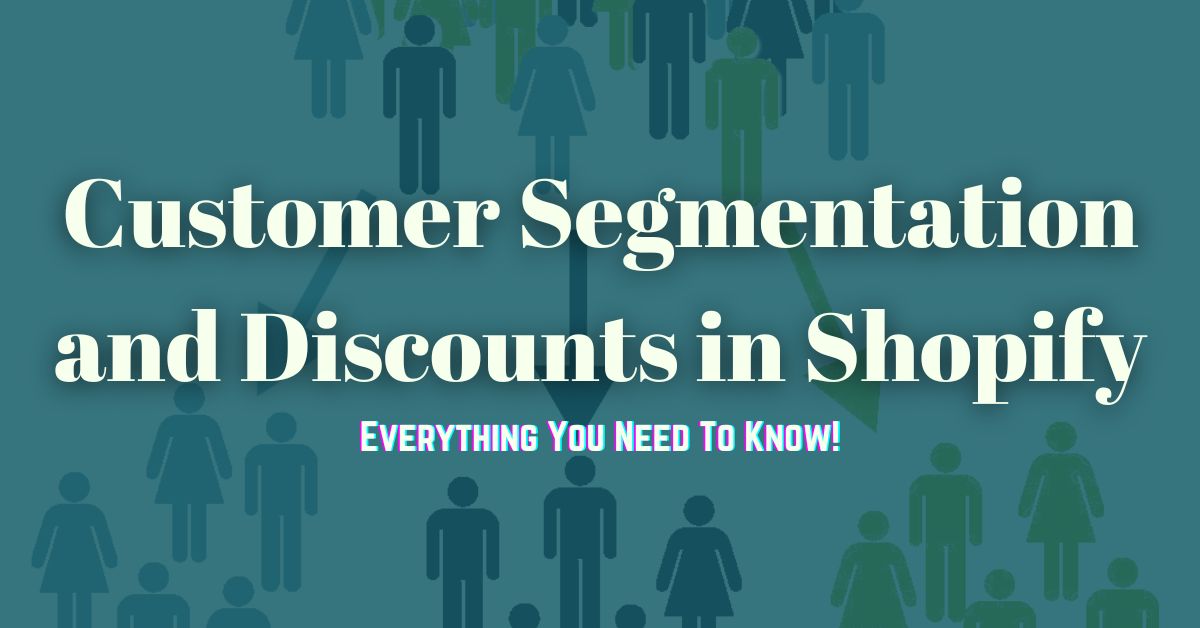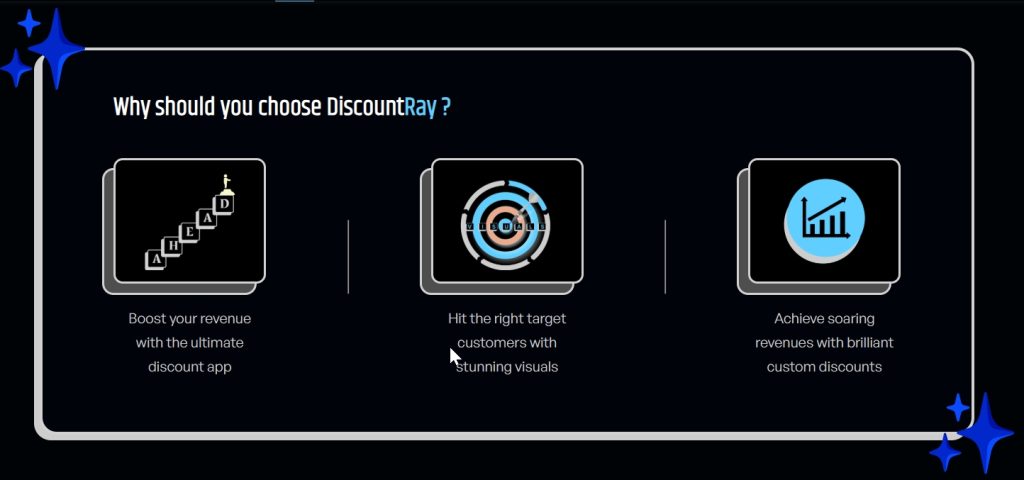
You know how important it is in Shopify to attract new customers while keeping your existing ones engaged. But how can you ensure your marketing efforts connect with the right audience? This is where customer segmentation and discounts in Shopify play a crucial role.
Customer segmentation involves grouping customers based on their behavior, preferences, demographics, and other key characteristics. According to Bloomreach, eCommerce personalization is the practice of using data to know, guide, and impress your customers in a way that feels relevant and contextual and works like magic for them.
In this article, we’ll explore what is customer segmentation in Shopify. Also, the types of customer segmentation and how it can help you boost sales, strengthen customer loyalty, and refine your overall marketing strategy.
Whether you run an e-commerce store, or a SaaS business, segmentation is a powerful approach that can give you a competitive edge. Let’s dive in and uncover how customer segmentation and discounts can enhance your marketing game and help you achieve your business goals.
Customer segmentation is a powerful strategy that allows Shopify store owners to identify and group customers based on shared characteristics, behaviors, or buying patterns.
When combined with well-planned discount strategies, segmentation enhances the shopping experience, drives sales, and boosts customer loyalty.
Customer segmentation in Shopify involves dividing your customer base into smaller, manageable groups. These groups are created based on data such as buying history, demographics, location, browsing behavior, and more.
Shopify provides useful tools and discount apps to make this process seamless, enabling store owners to rethink their marketing strategies and offers for each group.

Customer segmentation in Shopify is essential when crafting effective discount and promotion strategies because it ensures your offers are targeted and relevant. Instead of using a one-size-fits-all strategy, segmentation allows you to divide your customer base into smaller groups.
By understanding why it is important to segment your customers, you can craft personalized discounts that resonate with each group. For example, loyal customers might respond well to exclusive VIP discounts, while new customers could be attracted with first-time purchase offers. Similarly, seasonal buyers might appreciate time-sensitive promotions, and high-spending customers could enjoy rewards for their continued loyalty.
This targeted approach not only increases the likelihood of customers engaging with your offers but also helps maximize your marketing ROI. It reduces unnecessary spending on promotions that don’t appeal to your audience and instead builds stronger connections with your customers, encouraging repeat purchases and long-term loyalty.
In short, customer segmentation in Shopify is the key to aligning your discounts and promotions with what your audience truly values, driving both sales and lasting relationships.
Doing customer segmentation in Shopify effectively requires a strategic approach that leverages customer data to create meaningful groups.
Here are some ways how you can do it:
Start by collecting customer information, such as purchase history, browsing behavior, location, demographics, and engagement levels. Shopify’s built-in analytics and third-party apps can help you gather and organize this data efficiently.
Decide on the key factors that align with your business goals. For example, you might segment customers by purchase frequency, such as regular vs. occasional buyers, average order value, product preferences, or loyalty status.
Shopify allows you to create customer groups based on various conditions like tags, purchase history, or order values. This feature makes it easy to tailor your marketing strategies to each group. To automate discounts for each segment, consider using one of the best Shopify automatic discount apps that allow for dynamic rule-setting and seamless integration with customer groups.
Once segmented, you can design discounts and promotions that cater specifically to each group. For example, you might offer exclusive discounts to loyal customers, limited-time deals to inactive buyers, or first-time offers to new shoppers.
Monitor the performance of your segmentation strategies. Track metrics like conversion rates, repeat purchases, and customer engagement to identify what works best. Use these insights to refine your segments and campaigns over time.
By effectively segmenting your customer base on Shopify, you can deliver highly relevant experiences, enhance customer satisfaction, and drive more sales. This data-driven strategy helps you meet your customers’ needs and boosts your overall business.
There are various customer segmentation and discount types available, and Shopify store owners apply those types to segment their customer base effectively. By understanding these segmentation types, businesses can offer personalized discounts that resonate with specific customer needs and preferences.
Let’s explore the common types of customer segmentation and discounts in Shopify that work best for each:
Firmographic segmentation, customized for businesses rather than individuals, functions similarly to demographic segmentation but focuses on B2B companies. Each client organization has unique needs that the company’s offerings can address differently.
This type of segmentation relies on data such as company size, industry, location, and revenue. By analyzing these characteristics, B2B businesses can better understand their target audience and optimize their products or services to meet the distinct requirements of each group.
When businesses use geographical segmentation, they focus on a customer’s location, such as their country, region, or city. This strategy is crucial for companies that sell diverse products across various areas, allowing them to adjust pricing, product offerings, and marketing strategies to suit local needs.
For example, international fast-food chains customize their menus for different regions to reflect local tastes and preferences.
Similarly, B2B companies leverage geographic segmentation by assigning offices to specific regions or adapting their services to align with the customs and practices of international clients.
Psychographic segmentation goes deeper than demographic or behavioral segmentation by exploring customers’ lifestyles, values, interests, and attitudes—factors that significantly influence their buying behavior.
From lifestyle-focused advertising to luxury brands targeting specific audiences, businesses use psychographics to craft marketing strategies that resonate with customers on a personal level. Messaging, visuals, and campaign elements are designed to align with individual interests and values. It creates a stronger connection with the target audience.
Behavioral segmentation examines how customers interact with a product or service, decision-making, and buying patterns.
Key behaviors analyzed include:
Purchase Behavior: What customers buy, how often, and their spending habits.
Usage Behavior: How customers use the product or service.
Attitudinal Behavior: Customers’ perceptions of the brand, product, or company.
By focusing on these interactions, businesses can gain valuable insights into customer needs and preferences. For example, analyzing the buying methods of loyal customers can help create targeted campaigns and rewards to encourage repeat purchases and boost loyalty.
Needs-based segmentation identifies and addresses specific customer requirements, ensuring that products or services align closely with what the audience is seeking.
This strategy, primarily used in product development and customer service, analyzes how and why customers choose a product or service over competitors. By uncovering the motivations behind their decisions, businesses can design offerings that help them understand customer needs, maximizing the likelihood of success.
Customer segmentation is a powerful tool for enhancing the overall experience your Shopify store delivers.
One of the most significant benefits of segmentation is personalized communication. Customers are more likely to engage with content, offers, and messaging that feel relevant to them.
For example, offering exclusive discounts on items a customer has previously bought or expressed interest in creates a sense of value and understanding.
Segmentation also allows you to refine your marketing efforts. It improves the effectiveness of your campaigns and creates stronger customer relationships, as they feel understood and valued.
In the context of Shopify, segmentation enables you to create targeted discounts, loyalty programs, and product recommendations. For instance, identifying your top-spending customers allows you to reward them with exclusive perks, increasing their loyalty.
Implementing a customer segmentation and discounts strategy in Shopify is an essential step toward delivering personalized experiences and driving growth. However, the true value lies in measuring its effectiveness.
Measuring the success of your customer segmentation strategy involves tracking key metrics and analyzing the results to ensure that your efforts bring the desired outcomes. Here’s how to effectively implement your strategy:
One of the primary goals of segmentation is to improve customer loyalty. Measure your retention rate to determine if segmented customers are making repeat purchases. Compare retention rates before and after implementing your strategy to measure its impact.
Analyze how your segmentation affects customer spending. Targeted promotions or discounts for specific groups should ideally lead to an increase in AOV. Use Shopify’s analytics tools to monitor this metric across different customer segments.
Effective segmentation should result in more personalized marketing campaigns, which typically lead to higher conversion rates. Evaluate the performance of campaigns according to specific segments to identify whether they are driving more sales than generic campaigns.
Segmentation should encourage long-term engagement. Measure the CLV of your segmented groups to see if customers are spending more over time. This metric helps you understand the profitability of each segment.
Track how customers interact with your Shopify store, emails, and campaigns. Metrics like click-through rates (CTR), email open rates, and website visits can provide insights into the effectiveness of your communication with specific segments.
If your segmentation strategy includes targeted discounts, monitor how many customers are redeeming them. Higher redemption rates indicate that your offers resonate with the intended audience.
Segmented promotions should reduce cart abandonment by addressing specific customer concerns or preferences. A decrease in this rate suggests your segmentation strategy is working.
Customer feedback is invaluable in understanding the success of your strategy. Positive reviews and higher satisfaction scores from segmented customers can signal that your efforts are improving their experience.
Evaluate the overall financial impact of your segmentation strategy. Compare the revenue generated from segmented campaigns against the cost of implementing and maintaining your plan.
Use Shopify’s reporting tools to drill down into the performance of individual segments. Identify which segments are driving the most sales, engaging the most with your brand, or showing the highest retention.
Customer segmentation and discounts are powerful strategies that can transform how businesses interact with their customers. By understanding your audience on a deeper level, you can craft personalized experiences that resonate. It increases customer satisfaction and drives sales, retention, and long-term loyalty.
When paired with effective discounts, customer segmentation becomes even more impactful. Site-wide and category-specific discounts, tiered programs, and VIP customer discounts are just a few tools businesses can use to align their marketing efforts with customer preferences.
With Shopify apps and analytics, merchants can ensure that these strategies are not just theoretical, but actionable. They also can understand How to Use Discounts to Boost Shopify Sales. From creating targeted campaigns to measuring metrics like conversion rates, retention, and ROI, it empowers businesses to test, refine, and succeed.
Price segmentation (price differentiation) means offering different groups of customers different prices. Other groups of customers (segments) pay different prices based on a mix of various factors. Customer segmentation for pricing means applying different prices based on customers’ willingness to pay.
Discount pricing is a strategy in which you mark down the prices of your products. The ultimate goal of a discount pricing strategy can be to increase customer traffic, clear old and outdated inventory from your shelves, or increase sales volume.
Value-based pricing, also known as value-added pricing or value pricing, is a method of setting prices based on customers’ perceptions of the value of your product. The more your audience thinks your product or service is worth, the more you can charge.
In short, price segmentation charges a different price to different market segments. A typical example would be charging kids less for a movie ticket or senior citizens getting lower fares for public transportation.
Customer value-based pricing is a strategy in which businesses charge a price based on the perceived value of their product or service to the customer. In other words, companies set their prices based on how much value their customers feel they will get from the product or service.